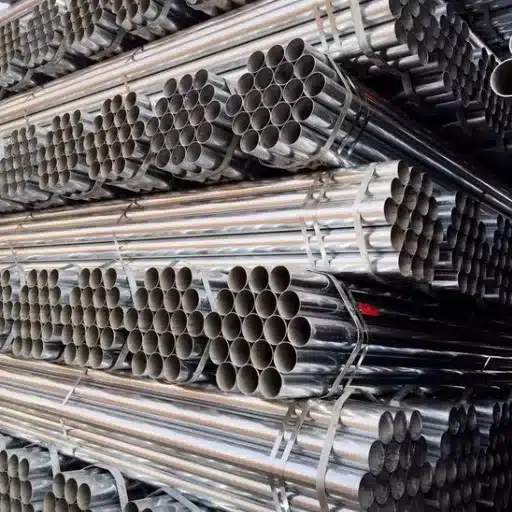As you choose the right type of steel pipe for a specific application, differences between stainless and carbon steel should be understood. These materials are incredibly common in multiple industries. However, their uniqueness allows them to be used in different places and for different purposes. In this article, we detail these two types of steel and their main features, advantages, and typical applications, thereby assisting the readers in making the right decisions for their needs. Be it factors like durability, price, or the impact of external environmental conditions, this guide will highlight the differences steel pipes have and will make any person understand the variety exhaustively. This is an overview, so make decisions wisely.
What is a Stainless Steel Pipe?
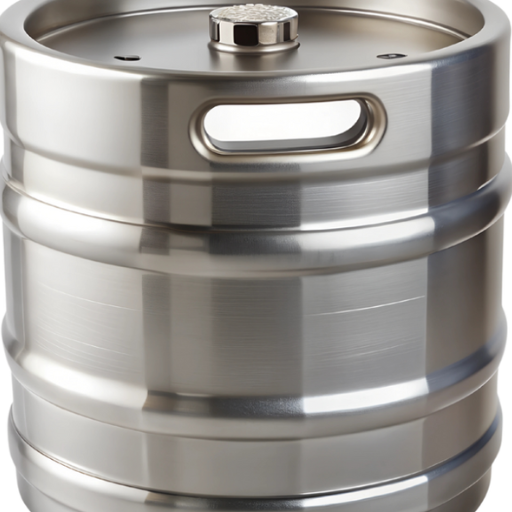
A stainless steel pipe possesses incredible durability and is corrosion-resistant due to the stainless steel alloy containing chromium. The alloy’s signature resistance to rusting and staining enhances the durability of the pipe. To mitigate staining and rusting, strength and versatility are required; thus, stainless steel pipes are used in the construction, food manufacturing, chemical processing, and automotive industries, as they can withstand extreme temperatures and harsh environments. Their biological resistance, durability, and minimal maintenance requirements enable reliable application in a variety of industries.
Characteristics of Stainless Steel Pipes
I’d like to highlight the fact that *stainless steel pipes* possess several remarkable features that make them invaluable for different industries. To begin with, there isn’t any environment synonymous with stainless steel pipes when it comes to corrosion resistance. It is true that these pipes are withstanding vigorous damage from a wide range of environments. Besides, the strength-to-weight ratio is optimally used by pipes as it enables them to withstand large amounts of pressure while simultaneously being light. In addition, there are numerous grades offered for stainless steel pipes in addition to many other finishes for these objects’ construction, food processing, hygiene, and even higher temperature applications. Lastly, their ability to be easily fabricated and recyclable makes them appealing, thus solving the problem of eco-friendliness as well as the economy for quite many years.
Applications and Uses of Stainless Steel
Industries commonly utilize stainless steel because of its strength and resistance to rust and corrosion. Construction materials, automotive parts, aerospace components, kitchen cookware, medical tools, chemical processing machinery, and food production equipment are just a few of the many applications it has. Its versatility on the other hand allows it to be essential in both industrial and domestic settings.
How Stainless Steel Pipes Belong to Metal
Stainless steel pipes can be classified as metals because of their composition and natural properties. These are basically pipes formed using iron alloyed with chromium, nickel, and molybdenum, which strengthen the pipes, make them resistant to corrosion, and enhance overall functionality. Being metals, stainless steel pipes have great durability, which, along with their malleability and conductivity, renders them essential in numerous industries and commercial ventures.
Defining Carbon Steel Pipe
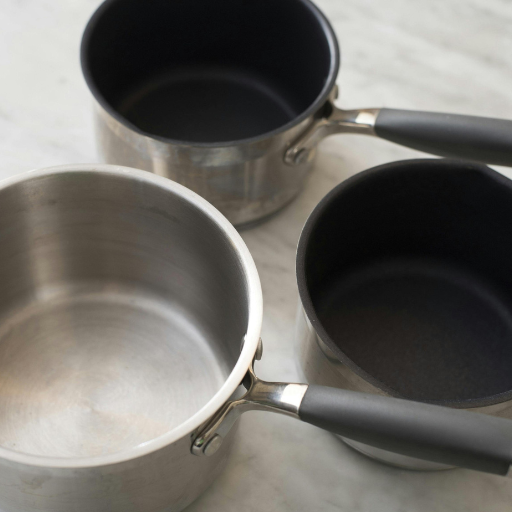
Carbon steel pipes are constructed chiefly from carbon and iron, with only small amounts of alloying constituents. As these pipes possess remarkable strength, high durability, and low costs, they are extensively used in construction, energy, and transportation sectors. The increased carbon content boosts the hardness and tensile strength of the pipes, making them suitable for high-pressure and stress applications, while also serving structural and fluid transport purposes.
Composition: Iron and Carbon
In my opinion, the key features of carbon steel pipes stem from its composition of iron and carbon. The ratio of these two constituents is vital—it has iron, which serves as a structural support, and carbon, which provides hardness and tensile strength. This rather simple composition is responsible for the ability of carbon steel pipes to withstand and function in harsh conditions, whether as high-pressure pipelines or structural supports for buildings.
Characteristics of Carbon Steel Pipes
Steel pipelines possess remarkable characteristics of immense strength, toughness, and abrasion resistance. Their outstanding strength makes such pipelines useful in the applications involving high-pressure systems. Also, due to their versatility, they can be used in different industries and, therefore, prove economical and efficient in meeting structural and transportation requirements.
Applications of Carbon Steel in Industries
I can reliably highlight that their applications are present in several sectors owing to their strength and exceptional versatility. Here are some of the principal uses of carbon steel, accompanied by relevant details:
- Construction Industry
Carbon steel is extremely critical in the construction industry. Its use is ideal due to its high tensile strength and durable nature when supporting frameworks, bridges, and skyscrapers. In addition, the ability to support large structures while being protected from environmental factors such as wind or earthquakes makes it a preferred metal for builders.
- Energy and Power Generation
In energy, carbon steel pipes are prevalent for the movement of oil, gas, and steam. In comparison to other material options, their resistance to wear and tear makes them ideal in very high pressure and high temperatures. Additionally, the sturdiness of the material decreases the chances of leaks or failures over great distances.
- Automotive and Transportation
The car industry uses carbon steel for chassis, panels, and engine parts. Its low weight, combined with strength, keeps the car’s structural integrity while being fuel-efficient. The material is also easy to weld and form, making it ideal for custom designs.
- Manufacturing and Heavy Equipment
Because of its hardness and resistance to abrasion, carbon steel is the metal of choice when making tools and machines of equipment. It is especially selected for teeth of gears, chains, and other cutting instruments which are greatly abused but require superior performance.
- Piping Systems
For water, steam, and industrial fluids, carbon steel pipes are useful in industrial piping systems. Their preference is warranted because of their ability to withstand high pressure, resist corrosion, and comparatively lower cost than other materials.
From the examination of the applications, it is apparent that carbon steel is vital for multiple industries owing to its characteristics and versatility. Such features prove to be important, but they will guarantee their use across industries for decades.
What is the Difference Between Carbon Steel and Stainless Steel?
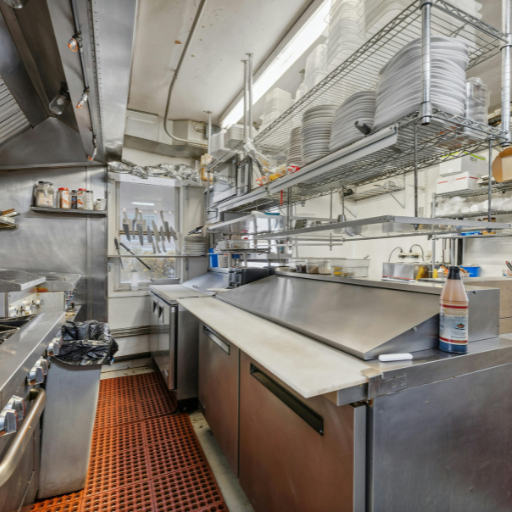
In carbon steel and stainless steel, I usually point towards their composition and usage differences; however, here I will add more detail to the differences, as well as the uses of each material. The primary components of carbon steel are iron and carbon, and with the presence of these elements, carbon steel exhibits a great amount of strength and durability, which makes it suitable for structural and tool applications. Meanwhile, stainless steel comes with chromium. This metal gives stainless steel an enhanced ability to resist rusting as well as preserving its shine, which makes it more appealing to use in devices that are exposed to water or require aesthetic value, such as kitchen utensils and medical equipment. All in all, both materials have unique properties, but the optimal selection highly depends on the goals and needs of the given task.
Main Difference in Physical Properties
The differing characteristics with respect to composition are what differ the most in physical properties. Carbon steel is stronger and harder due to its carbon content, but it has rust issues and needs to be protected with coatings. Stainless steel is smoother finished and more suitable for extreme environments but sacrifices some strength and corrosion resistance due to increased chromium content.
Comparison of Steel Pipe vs Stainless Steel
The decision to choose between steel pipes versus stainless steel pipes relies heavily on the intended use, as well as the surrounding conditions. Considering my professional background, let me share my assessments on how they compare with respect to some important benchmarks:
- Strength and Durability: Carbon steel pipes are often deemed stronger compared to other steel pipes, which enables them to withstand high-pressure applications. Carbon steel pipes are an excellent option for heavy-duty projects such as structural frameworks, industrial piping, and oil and gas pipelines.
- Corrosion Resistance: Stainless steel pipes have a clear advantage over others due to their chromium content, which is used to form protective oxide layers that rust does not destroy. Stainless steel pipes are increasingly appropriate for use in harsh environments, including marine settings, outdoor setup,s and chemical processing plants.
- Maintenance: Steel rather requires heavy dosing of paint or some other material to coat it over time, but stainless steel pipes require much lower maintenance as they remain rust free and can lower long term expenses and force.
- Cost: Steel pipes are much simpler in composition and do not offer as much strength as stainless steel pipes. Initially higher, stainless steel pipes save the user money in the long term due to high strength, longevity and incurison resistance.
- Aesthetic Appeal: The sleek and polish finish of stainless steel offer a sharp look making them a favored choice for architectural and decoritive purposes where the need for visibility is high.
All in all, the decision is up to you and your application’s dictates. If budget and sturdiness are chief concerns, carbon steel pipes are probably the best for the job, but if preventing corrosion, durability, and looks are more important, then stainless steel pipes are a better investment. Each type has its use, and knowing how and where they work best is the key to making the right selection for your requirements.
Price Differences and Market Availability
In terms of cost differences, carbon steel pipes are usually cheaper than stainless steel pipes. This makes them a very popular option for massive projects where costs are a deciding factor. Still, the more expensive stainless steel makes sense because of its greater strength, less susceptibility to corrosion, and reduced maintenance needs over time. Concerning market supply, both types are in stock most of the time, but certain grades and sizes may not always be in stock. I would suggest checking with suppliers during your planning stage so that you can get materials that satisfy your timelines and requirements.
When to Use Steel Pipe and Stainless Steel?

The selection of either a steel pipe or a stainless steel pipe, focusing on their differences, takes into consideration the application and other respective influences. Stainless steel is known to be much more expensive and is only used in environments where hygiene is of utmost importance and corrosion risk is high, such as in chemical processing and marine industries. Steel pipe, however, is far more economical and is ideal for agricultural work, practical construction, and wherever budget efficiency is highly needed. Understanding the specific details and requirements of your project will determine which material will be the most beneficial.
Choosing Based on Environmental Factors
Regarding the selection of materials in relation to the environment, I always start by stressing the need for a proper evaluation of the working conditions. As an example, highly humid areas combined with saltwater or chemical exposure are environments where stainless steel pipe will perform exceptionally well. Molten steels, on the other hand, are able to fulfill many of the requirements at a significantly more reasonable price in less corrosive environments. My strategy combines the different approaches in such a manner to ensure maximum durability in combination with safety while working within the project’s budget. There isn’t a single reasoned solution to every case; understanding the requirements and restrictions of the environment is one of the first steps to tackle such an issue.
Cost-Effectiveness: Carbon Steel Pipe vs Stainless Steel
In terms of affordability, carbon steel pipe grades are usually the cheaper upfront option, making them suitable for budget projects. On the other hand, stainless steel pipe grades have superior corrosion resistance and extended service life, which lowers maintenance and replacement costs over time. The most important consideration is the particular project needs, such as environmental factors and expected lifecycle. For cost-effective yet strong solutions, carbon steel offers a great option; for increased corrosion resistance and durable service life, the best option is stainless steel.
Long-term Durability and Maintenance
Whether to choose carbon steel or stainless steel for long-term applications concerning durability and maintenance largely depends on the environment and the project requirements. In my case, I usually recommend stainless steel when the application is likely to be subjected to aggressive or corrosive environments because it does not rust and wears out very slowly, which reduces the maintenance needs over time. However, for some projects where cuts in initial expenditure are of utmost importance and environmental conditions are not too stringent, carbon steel can also be dependable, provided it is well-treated and maintained. Understanding the specific parameters of the project is very useful in choosing the material that will provide the best durability and cost-effectiveness.
Exploring the Applications of Carbon Steel Pipes
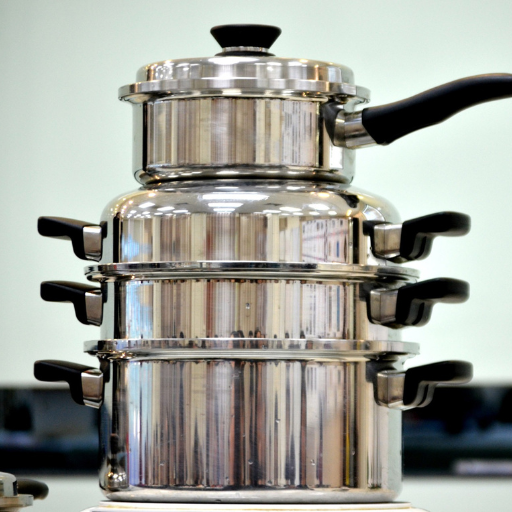
Because of their strength, durability, and low-cost, carbon steel pipes are used in various industries. For example, in construction, they are used as columns and beams, in the energy industry, they are used for moving oil and gas, and in manufacturing, they are used to make various machines and equipment. Steel Pipes are also resistant to corrosion which makes them useful for high-pressure applications. With proper treatment and maintenance, steel pipes become a lifelong reliable option for multiple applications.
Industrial Applications of Carbon Steel Pipes
Absolutely! I can clarify in layman’s terms what an industry expert like myself can provide insights on the industrial applications of carbon steel pipes.
Versatility is a key feature of carbon steel pipes that places them in a range of industries, which makes their application almost limitless. The following are some notable reasons that warrant their extensive usability:
- Durability and Strength
The carbon steel pipe is strong and durable which makes it a good choice for structural purposes. For example, it is used as the framework for bridges, buildings and other forms of infrastructure due to it having the ability to take on a lot of stress without breaking, deforming or undergoing any other forms of damage.
- Cost-Effectiveness
Carbon steel pipes are very cost effective in comparison to other materials, especially in bulk quantities. For many industrial uses, carbon steel is a good option as it is less expensive than stainless steel or specialized alloys and carbon steel does not compromise on basic performance.
- High-Pressure Applications
Due to their robust design, these pipes excel when used in the oil and gas industries. When it comes to transporting crude oil, natural gas, or refined products, these pipes are reliable and safe to operate under.
- Temperature Resistance
Carbon steel has a good range of temperatures it can withhold, making it useful for high-temperature and cryogenic applications. This is especially advantageous for power plants and chemical industries where temperature changes are the norms.
- Customizability
Distributions of carbon steel pipes can be done based on the requirements of an industry in terms of diameters, gauges, and even grade levels. Thinner grade pipes such as those used in plumbing are more preferred than the thicker grades used in industrial sized pipelines.
- Ease of Fabrication and Maintenance
These pipes are easily welded, cut, and molded into several shapes, enabling faster installations and far less downtime. Furthermore, durable treatments like coating or galvanization can extend the lifespan of carbon steel pipes.
Analysing the parameters, it becomes evident why carbon steel pipes are the best option for industries like construction and energy production. Their performance and versatility make them a key element in numerous applications.
Why Carbon Steel is Preferred in Construction
Carbon steel is favored over the rest in construction because of its cost-effectiveness and incredible strength, as well as its adaptability. It can endure extremely high pressure and temperature, making it useful in structural applications. Further, it can be welded, fabricated, and shaped into various forms, enabling it to accommodate the different requirements of construction projects. After being maintained and treated with protective measures like galvanization, carbon steel structures can last many decades, which is why it is so reliable in the construction industry.
Impact on a Country’s Steel Pipe Industry
Steel pipes play an unparalleled role in the harsh oil and gas drama, bursting construction scenes, and intensive waterworks, along with the bitter cold and high-pressure-wielding environments. As an industry specialist, I have steeped myself in the world’s finest steel pipe industries and their manipulation. It is apparent that a nation’s steel pipe sector is highly impacted. A sharp increase in Global demand for carbonized steel due to its adaptability and requirement has led this industry to prosper tremendously. Moreover, modern fabrication techniques have resulted in the ability to supply pipes of superior quality at much cheaper rates, which has increased the local and international market potential. This surge in industrial output fosters economic growth as well as employment, fortifying the industrial base of the country.
Reference
- The Difference Between Carbon Steel Pipes And Stainless Steel Pipes
- Differences between Carbon Steel and Stainless Steel Pipe
- What is the difference between carbon steel and stainless steel?
Frequently Asked Questions (FAQs)
Q: What is the main difference between carbon steel pipe and stainless steel pipe?
A: The main difference between carbon steel pipe and stainless steel pipe lies in their composition and resistance to corrosion. Carbon steel pipes are primarily composed of iron and carbon, while stainless steel pipes have a high chromium content, making them more resistant to rust and corrosion.
Q: Are there distinct physical characteristics that differentiate stainless and carbon steel pipes?
A: Yes, the difference is distinct physical characteristics. Stainless steel pipes are generally more resistant to corrosion and have a shiny, polished surface. In contrast, carbon steel pipes are typically darker and may require a protective coating to prevent rust.
Q: What are the applications of stainless steel pipe compared to carbon steel pipe?
A: Stainless steel pipes are often used in environments that require high corrosion resistance, such as in the food and beverage industry, medical equipment, and chemical processing. Carbon steel pipes are commonly used for transporting liquids and gases in plumbing and industrial settings, where corrosion resistance is less of a concern.
Q: How does the higher carbon content affect carbon steel pipes?
A: Higher carbon content in carbon steel pipes increases their strength and hardness but can also make them more brittle. This makes them suitable for high-pressure applications but less ideal for environments where flexibility is needed.
Q: What is the significance of chromium in stainless steel pipe?
A: Chromium in stainless steel pipe is crucial as it forms a passive layer of chromium oxide on the surface, which prevents rust and corrosion, enhancing the pipe’s durability and longevity in corrosive environments.
Q: Can you explain the difference between stainless steel and carbon steel in terms of alloys?
A: Stainless steel is an alloy that contains chromium, which provides corrosion resistance, while carbon steel is primarily composed of iron and carbon without significant amounts of alloying elements. This difference impacts their usage and properties significantly.
Q: Are stainless steel seamless steel pipes better than welded pipes?
A: Stainless steel seamless steel pipes offer better uniformity and strength compared to welded pipes, as they are manufactured without a seam, making them ideal for high-pressure and high-temperature applications.
Q: Why are carbon steel pipes more prevalent than stainless steel in some industries?
A: Carbon steel pipes are more prevalent in industries where cost is a significant factor, and corrosion is not a primary concern, such as construction and industrial piping, due to their lower cost compared to stainless steel pipes.
Q: What role do stainless and carbon steel play in high-pressure boiler steel pipes?
A: In high-pressure boiler steel pipes, stainless steel is preferred for its corrosion resistance and ability to withstand high temperatures, whereas carbon steel pipes are chosen for their strength and cost-effectiveness in applications where corrosion is not an issue.
Q: How do acid-resistant and heat-resistant steel billets relate to these types of pipes?
A: Acid-resistant and heat-resistant steel billets are used in the production of stainless steel pipes to ensure that they can withstand harsh chemical environments and high temperatures without degrading, making them suitable for specialized applications.






